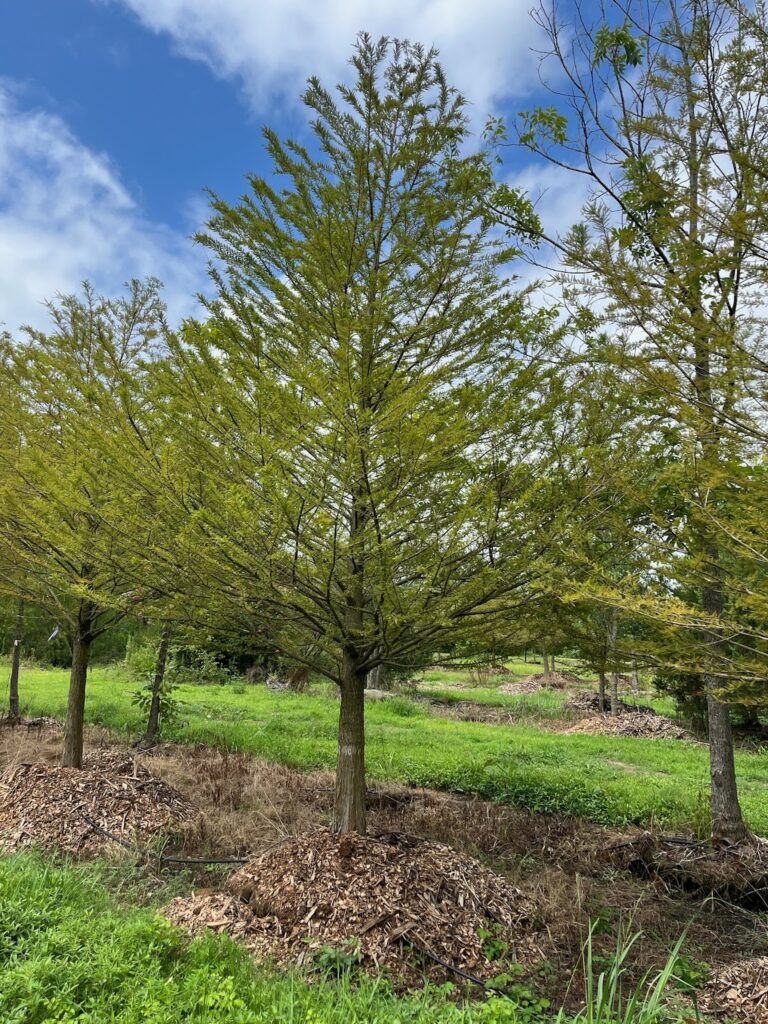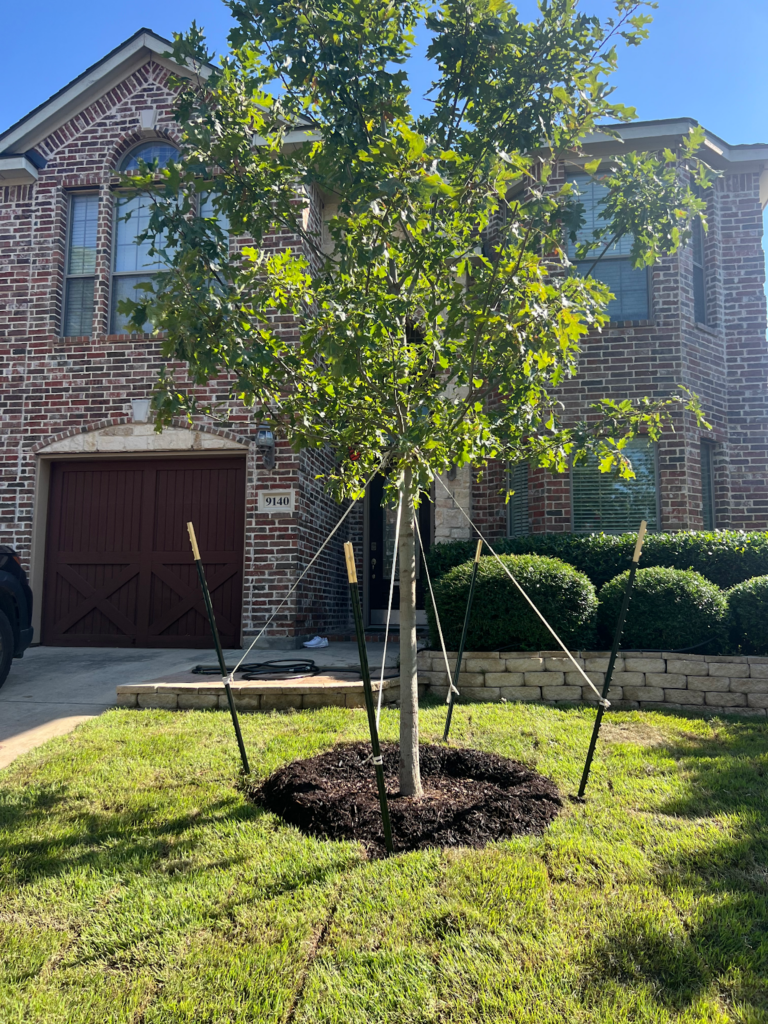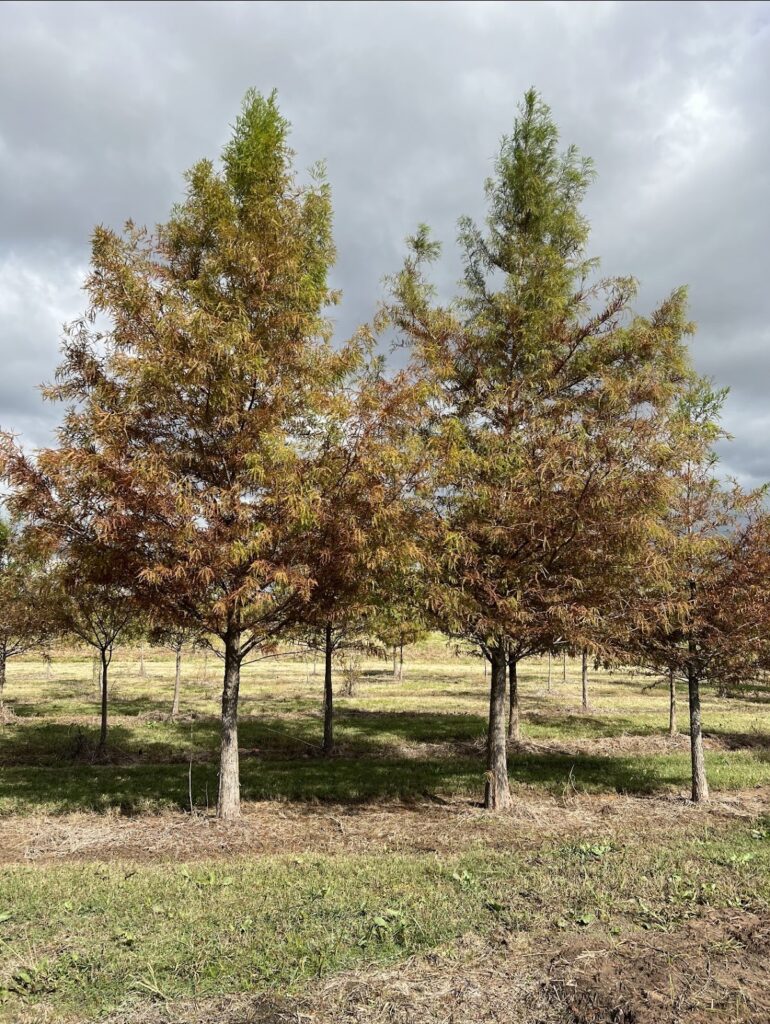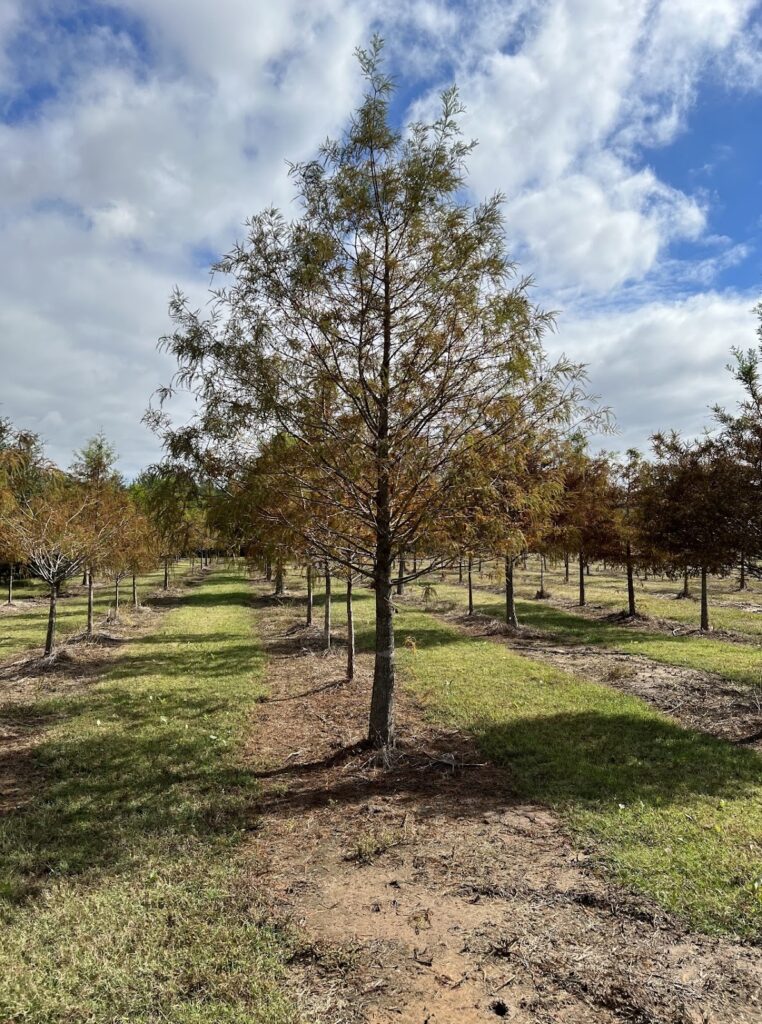
04 Feb How to Grow and Care for a Healthy Bald Cypress Tree
Bald cypress trees bring striking beauty to any landscape. Their tall trunks, elegant needles, and unique ability to thrive in wet conditions make them a popular choice for homeowners seeking a resilient and visually appealing addition to their garden.
Understanding the Bald Cypress Tree
Bald cypress trees (Taxodium distichum) are native to wetlands and swamps in the southeastern United States. They can adapt to a range of conditions, even tolerating mild drought once established. One of the most interesting traits is their “knees,” which are woody projections that grow up from the roots. While the exact purpose of these knees is debated, many believe they help the tree access oxygen in flooded or waterlogged areas.
These trees have needle-like leaves that turn a soft, yellowish-brown hue in autumn before dropping. They can grow quite tall, sometimes exceeding 70 feet, and their conical shape creates a grand presence in open spaces. Because they tolerate a variety of soil types, from sandy to clay, they suit a wide range of planting locations.
Whether you have a spacious yard or a wet area near a pond, a bald cypress can become a sturdy and attractive focal point.
Ideal Planting Conditions for Bald Cypress Trees

Proper site selection is crucial for a bald cypress to thrive. Although these trees can tolerate standing water, they also do well in average garden soil. They prefer sunny conditions, so choose a spot that gets at least six hours of sunlight each day.
Here are key factors to consider when selecting the right location:
- Sunlight Exposure: Aim for full sun to partial shade. Bald cypress trees do best when they receive abundant sunlight throughout the day.
- Soil Type: While these trees can handle clay or sandy soil, ensure the area drains well. Periodic flooding is tolerable, but long-term standing water without drainage can lead to root problems in less mature trees.
- Space Requirements: A mature bald cypress can become quite large, so give it space to expand. If you have multiple trees, leave ample room between them to reduce competition for nutrients and sunlight.
- Climate: Bald cypress trees flourish in USDA Hardiness Zones 4 through 10. They can handle cold winters in northern regions and hot, humid summers in southern regions.
When planning your landscape, consider the long-term height and width of a bald cypress. Think about power lines, nearby buildings, and any other structures that might interfere with the tree’s growth.
How to Plant a Bald Cypress

Planting a bald cypress is relatively straightforward. Proper planting ensures a healthy start and reduces the risk of transplant shock. Here’s a step-by-step outline:
- Dig the Hole: Create a hole at least twice the width of the tree’s root ball. The depth should allow the top of the root ball to sit 2–3 inches above the surrounding soil.
- Loosen the Soil: If your soil is compacted, work some organic matter, like compost, into the hole. For container-grown trees, gently loosen the roots before planting. If the tree is burlapped, remove any tightly wrapped burlap from the top and sides to help roots spread.
- Position the Tree: Remove the tree from its container and gently loosen any bound roots. Place it into the hole so the trunk stands upright. Backfill with the original soil, pressing it gently to remove air pockets.
- Water Thoroughly: Give the newly planted tree a generous amount of water to settle the soil and provide initial moisture. We recommend feeling the soil daily. If it’s dry, it needs water. If it’s moist, wait another 24 hours. Keep the soil around the root zone evenly moist while the tree establishes.
- Add Mulch: Spread a layer of organic mulch, such as shredded bark or wood chips, around the base of the tree, forming a ring. Keep the mulch a few inches away from the trunk to prevent rot, creating a raised, doughnut-shaped mound with a slight dip in the center (see image above). This helps direct water toward the roots while preventing excess moisture buildup against the trunk.
Watering and Soil Management
Bald cypress trees thrive in moist soil. Younger trees need regular watering until they develop a strong root system. Mature trees have a deep root structure and can handle occasional dry spells. Still, they perform best in environments with consistent moisture.
To maintain healthy soil conditions:
- Watering Frequency: Water newly planted bald cypress trees at least once or twice a week during the first growing season. In dry weather, increase watering. Once the tree matures, it can manage with natural rainfall except in prolonged drought.
- Mulch Maintenance: Check the mulch layer periodically and replenish it if it has broken down. A two- to three-inch layer is usually sufficient.
- Drainage: Although these trees handle wet conditions, consistently waterlogged soil can harm young roots. If you notice pooling around the trunk, consider improving drainage by creating channels or using organic matter to help the ground absorb water.
Seasonal Care and Maintenance

Bald cypress trees are relatively low-maintenance, but a few seasonal tasks will keep them thriving:
- Spring: Inspect the tree for any winter damage. Prune dead or broken branches before new growth begins. Apply a balanced, slow-release fertilizer to encourage strong leaf and root development.
- Summer: Keep a steady watering schedule during hot months. Check mulch levels and watch for signs of stress, such as browning leaves or stunted growth.
- Fall: Enjoy the tree’s stunning autumn color. Rake any fallen needles if you prefer a tidy lawn, though letting them decompose can provide extra nutrients. This is also a good time to plant additional bald cypress trees so they establish before winter.
- Winter: In colder climates, young trees may benefit from a layer of mulch or protective wrap around the trunk. Avoid heavy pruning in winter. Water if the ground isn’t frozen and conditions are dry.
Potential Pests and Diseases
Bald cypress trees are hardy and resistant to many pests and diseases. However, it’s still important to watch for problems so you can address them quickly:
- Bagworms: These insects create bag-like cocoons on branches. If you see bags, remove them by hand to prevent the pests from spreading.
- Spider Mites: During hot, dry conditions, spider mites may appear. Look for fine webbing or speckling on the leaves. Blast the leaves with a strong stream of water or use insecticidal soap to control mild infestations.
- Twig Blight: This fungal disease can cause browning or dieback of new growth. Prune away affected branches and discard them to reduce the spread of spores.
- Root Rot: Poor drainage and prolonged oversaturation can lead to root rot. Ensure the tree is planted in well-draining soil and avoid overwatering.
Regularly inspecting your trees can help you catch these issues early. Keep a balanced approach to watering and fertilizing to avoid stressing the tree. Healthy trees are less vulnerable to infestations and diseases.
Long-Term Growth and Pruning
Bald cypress trees can live for hundreds of years in the wild. While not everyone’s yard can accommodate centuries of growth, you can still enjoy a long-lived and impressive tree.
Pruning is often minimal unless you need to remove damaged or crossing branches. Occasional pruning:
- Helps maintain a strong branch structure.
- Improves air circulation.
- Prevents branches from rubbing together and causing wounds.
When pruning, use clean, sharp tools. Make cuts just outside the branch collar to allow proper healing. It’s best to prune in late winter or early spring, before new growth starts.
Embracing the Beauty of Bald Cypress

Growing a bald cypress can bring year-round interest to your property. Its feathery foliage, unique trunk features, and impressive height create a natural focal point. With the right planting conditions, consistent watering, and some seasonal care, you can enjoy a healthy tree that stands out in any setting.
If you’d like extra help ensuring your bald cypress remains in peak condition, contact our team at Price Right Trees. Our ISA-certified arborists can assist with tree care, maintenance, and other tree services. We are ready to help you keep your trees healthy and beautiful so you can focus on enjoying the view.
